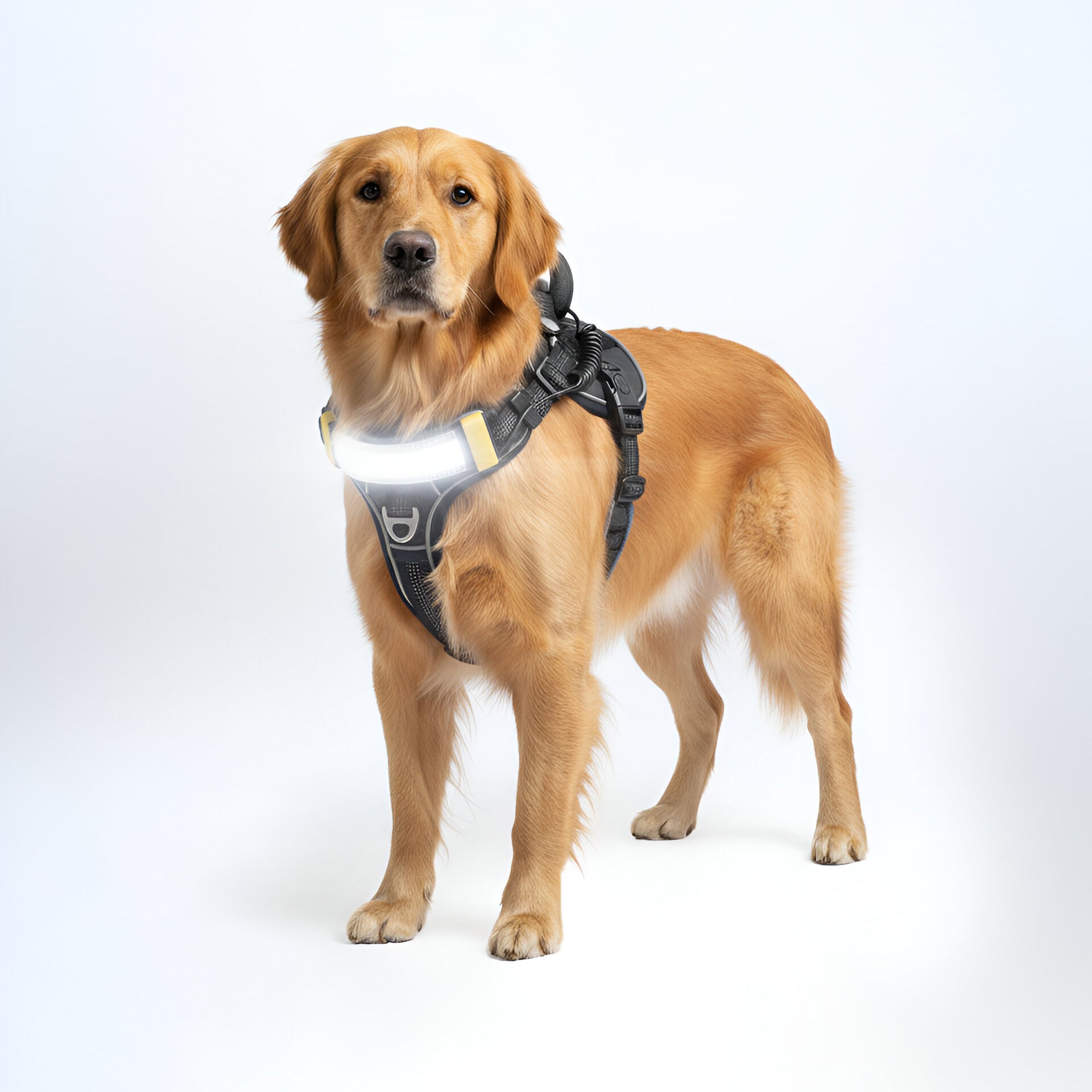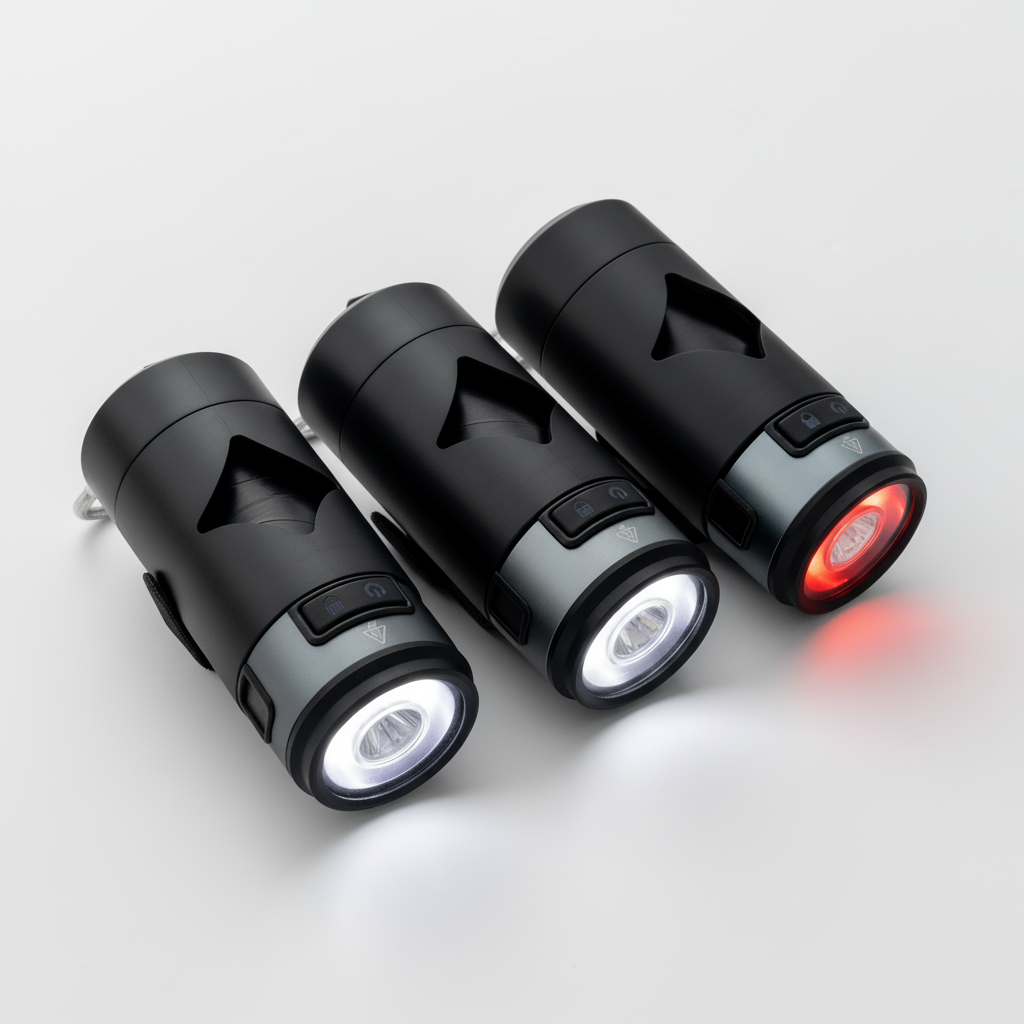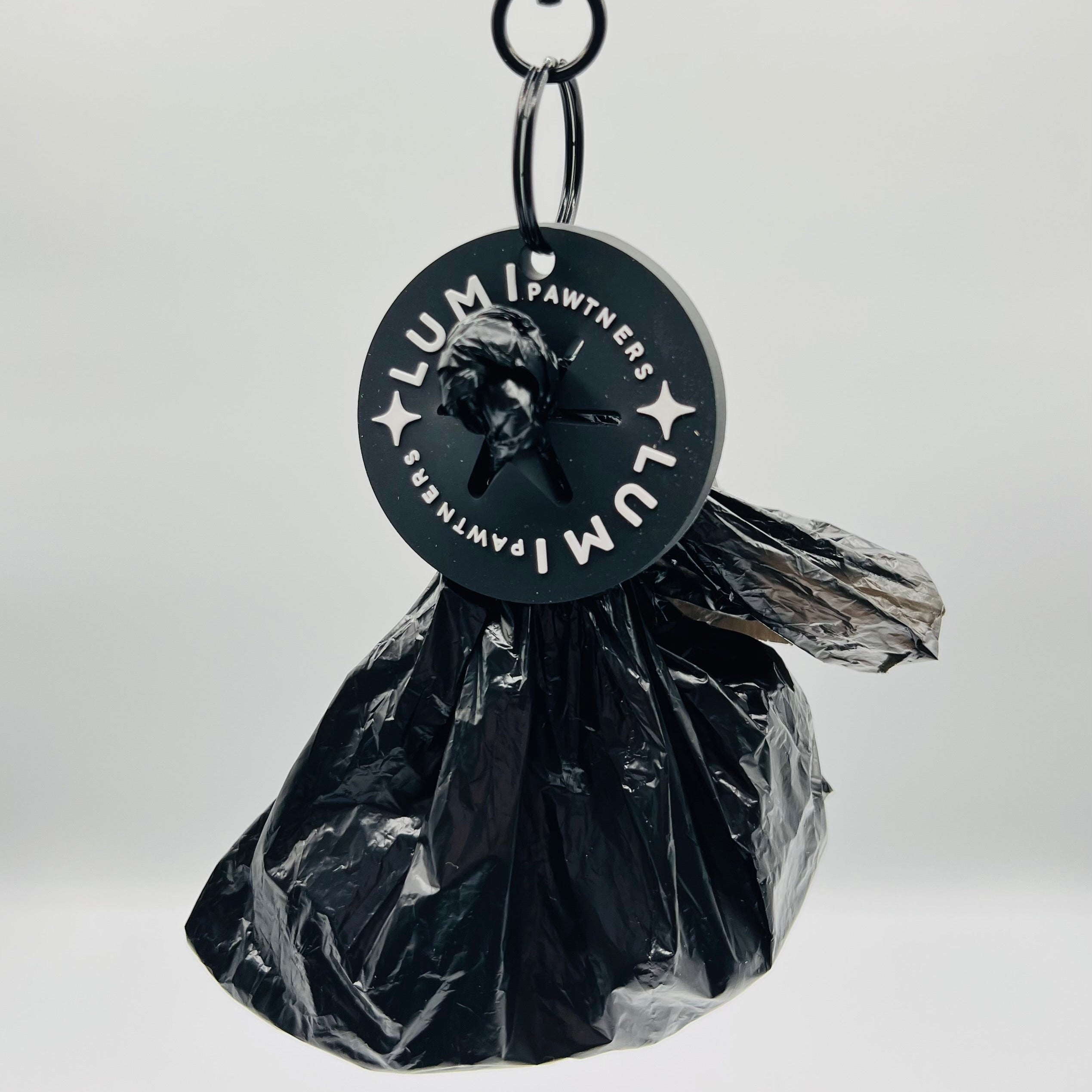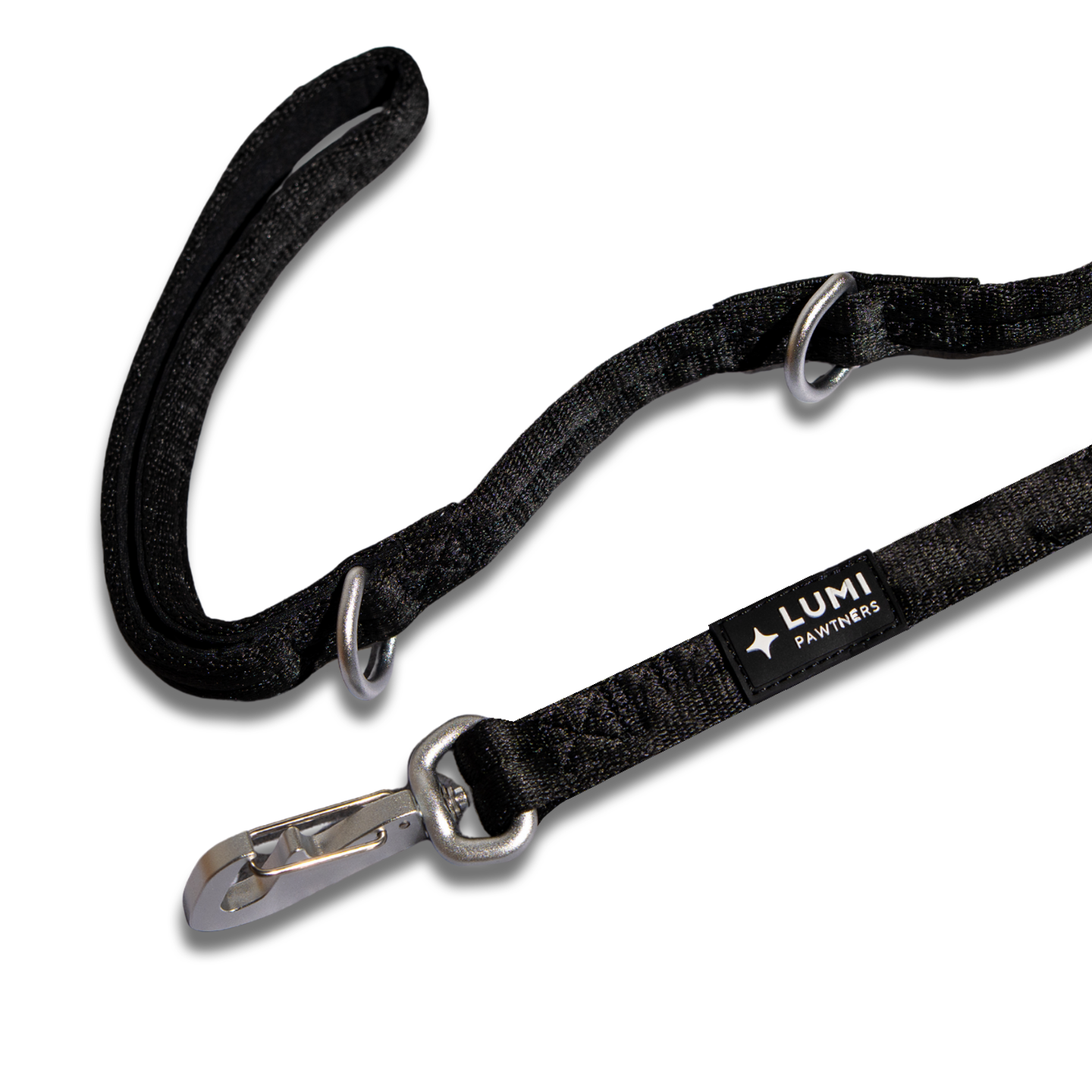You lace up your shoes, clip on the leash, and head out the door with your best friend. What should be a relaxing, bonding experience turns into a frustrating tug-of-war, a stressful dash through busy intersections, or worse, a trip to the emergency room.
If this sounds familiar, you're not alone. According to research published in BMC Public Health, around 36% of dog owners don't walk their dogs at all, and many who do are making critical mistakes that reduce the enjoyment and safety of these outings. Even more concerning, a study in Medicine & Science in Sports & Exercise found that dog-walking injuries quadrupled between 2001 and 2020, jumping from 7,200 to 32,000 emergency room visits annually.
The good news? Most of these mistakes are completely fixable. Let's walk through the most common errors that might be sabotaging your daily strolls and how to correct them.
Mistake #1: Letting Your Dog Pull (Or Thinking It's No Big Deal)
The Problem
Does your dog drag you down the street like a sled dog racing to the finish line? You're in good company, but not the kind you want. Research shows that 69% of UK dog owners consider leash pulling a problem, making it one of the most common behavioral issues among pet dogs.
But pulling isn't just annoying. It can cause serious harm to both you and your dog. For dogs, constant pulling creates pressure on their trachea, potentially leading to permanent damage to the throat, larynx, and even eyes. For you, it's a safety hazard. Dog-pulling behavior is the leading cause of leash-related injuries, according to a review published in the Journal of the American Veterinary Medical Association.
The Fix
Stop rewarding the pulling. Every time your dog pulls and you keep walking, you're teaching them that pulling works. Instead, try the "red light, green light" method: the moment your dog pulls, stop moving. Stand completely still. Wait for them to look back at you or for the leash to go slack. The second it does, praise them and continue walking.
This takes patience. You might only make it ten feet in your first training session. But stick with it. Most dogs learn this skill within a few weeks when practiced consistently.
Consider switching to a front-clip harness, which research shows can significantly reduce pulling force compared to standard collars. When the leash attaches to the chest, your dog naturally turns toward you instead of powering forward.

Mistake #2: Walking at the Wrong Time of Day
The Problem
Life gets busy, and sometimes the only window you have for a walk is after dark. But here's a sobering statistic: 76% of pedestrian deaths involving vehicles occur in the dark, according to the National Highway Traffic Safety Administration. That number jumps to over 65% when you include dusk and dawn.
Walking in low-light conditions without proper visibility gear puts both you and your dog at serious risk. Drivers often don't see pedestrians until it's too late, especially on roads without sidewalks or adequate street lighting.
The Fix
If evening or early morning walks are unavoidable (and for many of us, they are), visibility is everything. Wear reflective or light-colored clothing and make sure your dog is equally visible. Standard reflective strips on collars aren't always enough, especially if your dog has a thick coat or dark fur.
LED-illuminated harnesses offer 360-degree visibility that outperforms traditional reflective gear. Unlike reflective strips that only work when light hits them at the right angle, LED lights actively emit light, making you and your dog visible from much greater distances. This gives drivers the extra seconds they need to react.
For maximum visibility, consider a harness with serious illumination power. The Lumi One harness features a 1000-lumen beam that doesn't just make your dog visible—it actually lights up the path ahead, turning dark sidewalks and trails into safely navigable routes. This level of brightness ensures you can see hazards like uneven pavement or obstacles while also making sure cars can spot you from several blocks away.
Choose well-lit routes whenever possible, and consider adjusting your schedule. Early evening walks (right after sunset) can be particularly dangerous because drivers are dealing with transitioning light conditions.
Mistake #3: Using the Wrong Equipment
The Problem
Not all leashes and harnesses are created equal, and using the wrong equipment can make every other problem worse. Retractable leashes, while popular, are actually considered dangerous by many dog trainers and veterinarians. They give dogs too much freedom to build up momentum before hitting the end of the line, and the thin cord can cause rope burns if it wraps around your legs.
Standard collars work fine for well-trained dogs, but they put pressure directly on the throat when a dog pulls. This isn't just uncomfortable; it's potentially harmful.
The Fix
Use a 6-foot leash made of sturdy nylon or leather. This length gives your dog some freedom to explore while keeping them close enough for you to maintain control. Skip the retractable leash entirely.
For the harness, look for these features:
- Front-clip attachment point for better control
- Adjustable straps for a proper fit
- Padded areas to prevent chafing
- Reflective elements or LED lighting for visibility
- Durable construction that withstands daily use
- Easy maintenance and cleaning
If you frequently walk after dark, invest in a harness designed specifically for low-light conditions. Quality matters here. The Lumi One, for example, combines all the features above with a modular design and rechargeable USB-C battery, so you never have to fumble with disposable batteries or worry about your light dying mid-walk. After rigorous testing and multiple iterations, it's built to handle everything from casual evening strolls to serious hiking adventures.
The right equipment makes training easier and keeps everyone safer. Think of it as an investment in years of better walks.
Mistake #4: Not Giving Your Dog Enough Mental Stimulation
The Problem
You walk the same route every single day. Your dog sniffs the same tree, sees the same sights, and basically goes on autopilot. While routine has its benefits, a lack of mental stimulation can lead to boredom, which manifests as pulling, reactivity, or other unwanted behaviors.
According to veterinary research on dog behavior, dogs need both physical exercise and mental enrichment. A monotonous walk around the block might tire their body, but it does little for their mind.
The Fix
Change up your routine. Take different routes a few times a week. Let your dog sniff more (within reason). Those sniffs are how dogs experience the world, and allowing extra sniffing time provides valuable mental stimulation.
Incorporate short training sessions into your walks. Practice "sit" at intersections, work on "leave it" when you pass tempting smells, or play recall games in a safe, fenced area. These brief training moments make walks more engaging for your dog and strengthen your bond.
Think of walks as enrichment, not just exercise. A 20-minute walk with plenty of new smells and experiences can be more satisfying than a 40-minute march through the same old neighborhood.

Mistake #5: Inconsistent Training
The Problem
Monday through Friday, you're diligent about not letting your dog pull. But Saturday morning, when you're running late and just need them to do their business, you let it slide. This inconsistency confuses your dog and undermines all your training efforts.
Dogs learn through patterns. When you're inconsistent, you're essentially teaching them that the rules are optional. This makes every other training mistake harder to fix.
The Fix
Set realistic expectations and stick to them 100% of the time. If you don't have time for a training walk, let your dog out in the yard instead. Better yet, get up 10 minutes earlier so you're never rushed.
Everyone in your household needs to follow the same rules. If you work on loose-leash walking but your partner lets the dog pull them around, your dog will quickly learn to take advantage of the inconsistency.
Yes, this requires discipline on your part. But consistency is the single most important factor in successful dog training. A few weeks of strict consistency now saves you months or years of frustration later.
Mistake #6: Skipping the Pre-Walk Routine
The Problem
You grab the leash, and your dog immediately goes bananas. They're jumping, spinning, and generally losing their mind with excitement. You clip on the leash in this hyper state and then wonder why your walk starts with five minutes of chaos.
The energy your dog has when you start the walk sets the tone for the entire outing. Start with chaos, end with chaos.
The Fix
Establish a calm pre-walk routine. Before you even touch the leash, have your dog sit and wait. Pick up the leash and if they break position, put it back down. Repeat until they can stay calm while you handle their walking equipment.
Only open the door once your dog is calm and sitting. If they rush the door, close it and start over. This might add five minutes to your first few walks, but your dog will quickly learn that calm behavior gets them outside faster.
Some dogs benefit from a brief play session or training exercise before the walk to take the edge off their excitement. A quick game of tug or a few minutes of fetch can help them settle into a calmer state for the actual walk.

Mistake #7: Forgetting You're Part of the Team
The Problem
You're scrolling through your phone, thinking about work, or chatting with a friend while your dog does whatever they want at the end of the leash. When they suddenly lunge at a squirrel or another dog, you're caught completely off guard.
Being distracted during walks is dangerous. You can't anticipate problems, reward good behavior, or keep your dog (and yourself) safe if you're not paying attention. And according to pedestrian safety research, distracted walking contributes to thousands of injuries each year.
The Fix
Put your phone away. If you need to take a call, stop walking and step off the path. Walks are one of the few times you have your dog's undivided attention. Return the favor.
Stay aware of your surroundings. Notice dogs approaching from a distance so you can prepare. Watch for cyclists, joggers, and cars. Keep an eye on what your dog is interested in so you can redirect before they fixate.
This doesn't mean walks can't be relaxing. Quite the opposite. When you're fully present, you'll notice things you've been missing: the way your dog investigates new smells, the joy in their gait when they're happy, the communication happening through the leash between you.
Being present makes walks safer and more enjoyable for both of you.
Mistake #8: Ignoring Warning Signs of Reactivity
The Problem
Your dog occasionally barks at other dogs or lunges toward people, but you chalk it up to them being "friendly" or "just excited." Left unaddressed, these behaviors often escalate into full-blown reactivity, making walks stressful for everyone involved.
Leash reactivity (barking, lunging, or aggressive displays toward people, dogs, or other triggers) affects countless dogs. Nearly one in four dogs are returned to shelters due to behavioral issues, and reactivity is a major contributor to that statistic.
The Fix
If your dog shows signs of reactivity, address it early. Work with a certified professional dog trainer who specializes in reactivity. These behaviors rarely improve on their own and often get worse without intervention.
In the meantime, manage the environment. Cross the street when you see triggers approaching. Use high-value treats to reward calm behavior when your dog notices but doesn't react to a trigger. Never punish reactive behavior, which often makes it worse.
For some dogs, a front-clip harness or head halter provides better control during reactive episodes, buying you time to redirect their attention. But equipment is only part of the solution. Behavior modification through positive reinforcement training is essential for long-term improvement.
The Bottom Line
Dog walking should be one of the highlights of both your days. When done right, it provides exercise, mental stimulation, bonding time, and stress relief for you and your pup. But when done wrong, it becomes a source of frustration, potential injury, and missed opportunities.
Research from BMC Veterinary Research shows that dog owners who regularly walk their dogs experience better health outcomes, including improved BMI and lower rates of hypertension. But these benefits only happen when walks are consistent and enjoyable.
Start with one mistake from this list. Fix it this week. Then move on to the next one. Small, consistent improvements add up to dramatically better walks within a month or two.
Your dog isn't trying to ruin your walks. They're just responding to what they've learned works. Change what works, and you'll change the behavior. The reward? Peaceful, safe, enjoyable walks that both of you look forward to every single day.
Remember, investing in the right equipment—from a quality harness to proper visibility gear like the Lumi One—isn't just about convenience. It's about creating safer, more enjoyable experiences that strengthen the bond between you and your best friend.
Looking for ways to make your nighttime walks safer? Check out our guides on What Time Should I Walk My Dog at Night? and Dog Walking at Night Safety to keep you and your pup safe after dark.




